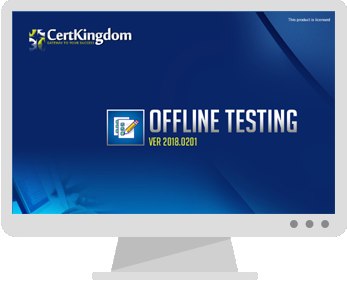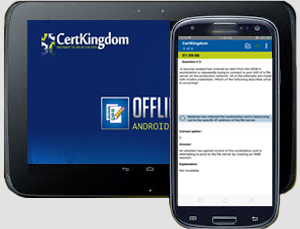Exam: C_S4CCO_2506

|
|||||||||||||||||||||||||||
THEORETICAL EXAM C_S4CCO_2506
80 questions (3 hrs) 65% cut score
Available in EN
The SAP C_S4CCO_2506 is an associate-level exam testing implementation
consultant skills for SAP S/4HANA Cloud Public Edition, Management Accounting.
The exam has 80 multiple-choice questions, lasts 3 hours, and requires a 65% cut
score to pass. Key topics include Overhead, Production, and Sales Accounting,
along with Configuration, Identity Access Management, and the SAP Fiori
Launchpad.
Exam Overview
Name: SAP Certified Associate - Implementation Consultant - SAP S/4HANA
Cloud Public Edition, Management Accounting
Code: C_S4CCO_2506
Level: Associate
Language: English
Overview
This certification verifies that you possess the fundamental knowledge
required to explain and execute core implementation project tasks to deploy,
adopt and extend SAP S/4HANA Cloud Public Edition as well as core knowledge in
Management Accounting. It proves that the candidate has an overall understanding
and in depth technical skills to participate as a member of a SAP S/4HANA Cloud
Public Edition implementation project team with a focus on Management Accounting
in a mentored role.
Topics covered in this exam
To help you get ready, we recommend following these steps
Study the relevant material in the Learning Journey
Complete the practical test
Schedule and take the theoretical exam to earn your certification
Below is a list of topics that may be covered in the theoretical exam. Please
note: this is a guide, not a guarantee—SAP may update exam content at any time.
Overhead Accounting
Exam percentage: 11-20%
Production Accounting (F2261, F2262, F2271)
Exam percentage: 11-20%
Sales Accounting
Exam percentage: 11-20%
System Landscapes and Identity Access Management
Exam percentage: <=10%
Configuration and the SAP Fiori Launchpad
Exam percentage: <=10%
Implementing with a Cloud Mindset, Building the Team, and Conducting
Fit-to-Standard Workshops
Exam percentage: <=10%
Introduction to Cloud Computing and SAP Cloud ERP Deployment Options
Exam percentage: <=10%
Extensibility and Integration
Exam percentage: <=10%
Data Migration and Business Process Testing
Exam percentage: <=10%
C_S4CCO_2506 Brain Dumps Exam + Online / Offline and Android Testing Engine & 4500+ other exams included
$50 - $25 (you save $25)
Buy Now
QUESTION 1
In your system, event-based revenue recognition and COGS split are active.
Which accounting documents are created at goods issue for a sales order?
A. One for goods issue and COGS split, and one for event-based revenue
recognition.
B. One for goods issue and event-based-revenue recognition, and one for COGS
split.
C. One single document for goods issue, COGS split, and event-based revenue
recognition.
D. One for goods issue, one for COGS split, and one for event-based revenue
recognition.
Answer: D
Explanation:
When goods issue is posted in a system where both event-based revenue
recognition (EBRR) and COGS split are active, SAP SHANA creates three separate
accounting documents:
1. Goods issue document - records the reduction of inventory and initial COGS
posting
2. COGS split document - breaks down the COGS into cost components (e.g., direct
materials, overhead)
3. Event-based revenue recognition document - posts the matching revenue (as
adjusted or expected revenue) for the delivery This aligns with option D:
D. One for goods issue, one for COGS split, and one for event-based revenue
recognition.
learning.sap.com+1learning.sap.com+1
QUESTION 2
What does the cost center category allow you to control?Note: There are 3
Correct Answe rs to this questio n.
A. Whether you can post to a business area
B. Whether you can record consumption quantities
C. Whether you can enter planned revenues
D. Whether you can record commitments
E. Whether you can post actual secondary costs
Answer: B D E
Explanation:
The Correct Answe rs can be confirmed from Utilizing Cost Center Categories on
learning.sap.com,
where it's explained that cost center categories let you control default posting
options—specifically
around quantities, commitments, and costs. Here's what the documentation
highlights:
Recording consumption quantities — you can allow or lock quantity postings for
the cost
center category C SAP Learning
Recording commitments — you can define whether commitments are managed for the
category C
Posting actual primary, secondary costs, and/or revenues — including secondary
costs, which
are part of allocations C SAP Learning
There is no mention of controlling postings to business areas, and the
documentation focuses on
actual postings (not planned revenues). So, the three Correct Answe rs are:
B . Whether you can record consumption quantities
D . Whether you can record commitments
E . Whether you can post actual secondary costs
QUESTION 3
What are the purposes of the sales order cost estimate? Note: There are 3
Correct Answe rs to this question,
A. It is the foundation for calculating target costs as part of the production
order's variance calculation.
B. It is the source of the actual price revaluation during period end closing
activities.
C. It is used in overhead calculation during period end closing activities on
the production order.
D. It is the basis for the cost of goods sold in Margin Analysis.
E. It will evaluate the customer's individual stock.
Answer: A C D
Explanation:
Based on SAP's official materials on learning.sap.com, the three correct
purposes of the Sales Order Cost Estimate are:
A . It is the foundation for calculating target costs as part of the production
order's variance
calculation. C The system uses the sales order cost estimate (or order BOM
estimate) to determine
standard prices, calculate target costs, and ultimately derive production
variances during goods
receipt and order confirmation SAP Learning+14SAP Learning+14SAP Learning+14.
C . It is used in overhead calculation during period end closing activities on
the production order.
C The estimate includes material, production, and overhead costs by cost
component structure,
which feed into cost object controlling (especially for make-to-order), results
analysis, and CO-PA SAP
Learning+9SAP Learning+9SAP Learning+9.
D . It is the basis for the cost of goods sold in Margin Analysis.
C Sales order cost estimates provide the variable/fixed COGS figures used in
margin analytics for each
sales order delivery SAP Learning+14SAP Learning+14SAP Learning+14.
Incorrect options:
B (source of actual price revaluation during period-end closing closing): No
evidence
supports this as a function of the sales order cost estimate.
E (evaluating customer's individual stock): While the estimate supports valuated
sales order
stock, it does not directly evaluate individual customer stock SAP Learning+4SAP
Learning+4SAP
Learning+4SAP Learning+4SAP Learning+4SAP Learning+4.
✅ Final
Answer:
A. It is the foundation for calculating target costs as part of the production
order's variance calculation.
C. It is used in overhead calculation during period end closing activities on
the production order.
D. It is the basis for the cost of goods sold in Margin Analysis.
QUESTION 4
Based on the SAP Activate methodology, which activities must you perform in the
Explore phase? Note: There are 2 Correct Answe rs to this questio n.
A. Define the organizational structure and chart of accounts.
B. Conduct the Fit-to-Standard analysis to gather configuration values.
C. Use the Test system to demonstrate SAP Best Practice processes.
D. Conduct the Digital Discovery Assessment to identify extension requirements.
Answer: B C
Explanation:
The Explore phase of the SAP Activate methodology (for both Cloud and On-Prem)
includes the
following core activities, as documented on learning.sap.com:
1. Conduct the Fit-to-Standard analysis to gather configuration values
o Explore phase features â€oefit-to-standard workshops†to confirm business
process fit and
capture configuration values and delta requirements in the backlog SAP
Learning+15SAP
Learning+15SAP Learning+15.
2. Use the Test (sandbox/starter) system to demonstrate SAP Best Practice
processes
o Customer business experts see standard SAP processes in a sandbox
(starter/fully-activated)
system during workshops. This ensures fit and helps capture customization needs
SAP Learning+2SAP
Learning+2SAP Learning+2SAP Learning.
â OE Not correct for the Explore phase:
A (Define organizational structure and chart of accounts): setup occurs in
Prepare or later.
D (Conduct Digital Discovery Assessment): this activity occurs in the Discover (precommitment/
sales) phase SAP Learning+15SAP Learning+15SAP Learning+15.
✅ Final Answe rs:
B. Conduct the Fit-to-Standard analysis to gather configuration values
C. Use the Test system to demonstrate SAP Best Practice processes
QUESTION 5
What are the consequences of event-based revenue recognition in the sales
process? Note: There are 2 Correct Answe rs to this questio n.
A. The cost of goods sold is posted during the billing process
B. When posting a goods issue, the planned revenue appears as adjusted revenue
C. When posting a goods issue, the planned costs appear as adjusted costs
D. The billing process results in an offsetting entry for the adjusted revenue
Answer: B D
Explanation:
Solution:
Based on official SAP documentation on learning.sap.com concerning event-based
revenue
recognition in the sales process, the two correct consequences are:
✅ Correct Answe rs
B . When posting a goods issue, the planned revenue appears as adjusted revenue
Event-based revenue recognition triggers real-time posting of â€oeadjusted
revenue†upon
goods issue, reflecting the transition from planned to recognized sales revenue
SAP Learning+6SAP Learning+6SAP Learning+6.
D . The billing process results in an offsetting entry for the adjusted revenue
During billing, SAP posts the offsetting entry to clear the adjusted revenue
that was
recognized earlier, completing the revenue recognition cycle SAP Learning.
â OE InCorrect Answe rs
A. COGS are not posted during billing; they are usually recognized at the time
of goods issue (not billing) in an event-based revenue recognition scenario.
C. Planned costs are not handled as adjusted costs upon goods issue; only
revenue gets adjusted in this context.
OEFinal Selection:
B. When posting a goods issue, the planned revenue appears as adjusted revenue
D. The billing process results in an offsetting entry for the adjusted revenue
Buy Complete
Students Feedback / Reviews/ Discussion
Mahrous Mostafa Adel Amin 1 week, 2 days ago - Abuhib- United Arab
Emirates
Passed the exam today, Got 98 questions in total, and 2 of them weren’t from
exam topics. Rest of them was exactly the same!
upvoted 4 times
Mbongiseni Dlongolo - South Africa2 weeks, 5 days ago
Thank you so much, I passed C_S4CCO_2506 today! 41 questions out of 44 are from
Certkingdom
upvoted 2 times
Kenyon Stefanie 1 month, 1 week ago - USA State / Province = Virginia
Thank you so much, huge help! I passed C_S4CCO_2506 SAP today! The big majority
of questions were from here.
upvoted 2 times
Danny 1 month, 1 week ago - United States CUSTOMER_STATE_NAME: Costa Mesa =
USA
Passed the exam today, 100% points. Got 44 questions in total, and 3 of them
weren’t from exam topics. Rest of them was exactly the same!
MENESES RAUL 93% 2 week ago - USA = Texas
was from this topic! I did buy the contributor access. Thank you certkingdom!
upvoted 4 times
Zemljaric Rok 1 month, 2 weeks ago - Ljubljana Slovenia
Cleared my exam today - Over 80% questions from here, many thanks certkingdom
and everyone for the meaningful discussions.
upvoted 2 times
logged members Can Post comments / review and take part in Discussion
Certkingdom Offline Testing Engine Simulator Download
Prepare with yourself how CertKingdom Offline Exam Simulator it is designed specifically for any exam preparation. It allows you to create, edit, and take practice tests in an environment very similar to an actual exam.
Supported Platforms: Windows-7 64bit or later - EULA | How to Install?
FAQ's: Windows-8 / Windows 10 if you face any issue kinldy uninstall and reinstall the Simulator again.
Download Offline Simulator-Beta
Certkingdom Testing Engine Features
- Certkingdom Testing Engine simulates the real exam environment.
- Interactive Testing Engine Included
- Live Web App Testing Engine
- Offline Downloadable Desktop App Testing Engine
- Testing Engine App for Android
- Testing Engine App for iPhone
- Testing Engine App for iPad
- Working with the Certkingdom Testing Engine is just like taking the real tests, except we also give you the correct answers.
- More importantly, we also give you detailed explanations to ensure you fully understand how and why the answers are correct.
Certkingdom Android Testing Engine Simulator Download
Take your learning mobile android device with all the features as desktop offline testing engine. All android devices are supported.
Supported Platforms: All Android OS EULA
Install the Android Testing Engine from google play store and download the app.ck from certkingdom website android testing engine download

Certkingdom Android Testing Engine Features
- CertKingdom Offline Android Testing Engine
- Make sure to enable Root check in Playstore
- Live Realistic practice tests
- Live Virtual test environment
- Live Practice test environment
- Mark unanswered Q&A
- Free Updates
- Save your tests results
- Re-examine the unanswered Q & A
- Make your own test scenario (settings)
- Just like the real tests: multiple choice questions
- Updated regularly, always current




